About The Johns Hopkins University. Facts And Statistics.
Sections for Johns Hopkins University
- About The Johns Hopkins University.
- About The Johns Hopkins University. History.
- About The Johns Hopkins University. Facts And Statistics.
About The Johns Hopkins University. Facts And Statistics
Academic Facts and Figures
- Pertinent Facts & Stats for Prospective Undergraduates
- Tuition and Financial Aid Figures: Current and Past
Johns Hopkins Notables
- JHU: Research Highlights and Innovations
- JHU Faculty Honors
- Nobel Prize Winners with Johns Hopkins Affiliations
- Current Books by Johns Hopkins Faculty and Administrative Members
- Notable Johns Hopkins Graduates
- Named Professorships at JHU
> Johns Hopkins University Mission Statement.
The mission of The Johns Hopkins University is to educate its students and cultivate their capacity for life-long learning, to foster independent and original research, and to bring the benefits of discovery to the world.

> Who Was Johns Hopkins
First things first: why the extra “S”? Because his first name was really a last name.

Johns Hopkins’ great-grandmother was Margaret Johns, the daughter of Richard Johns, owner of a 4,000-acre estate in Calvert County, Md. Margaret Johns married Gerard Hopkins in 1700; one of their children was named Johns Hopkins.
The second Johns Hopkins, grandson of the first, was born in 1795 on his family’s tobacco plantation in southern Maryland. His formal education ended in 1807, when his parents, devout Quakers, decided on the basis of religious conviction to free their slaves and put Johns and his brother to work in the fields. Johns left home at 17 for Baltimore and a job in business with an uncle, then established his own mercantile house at the age of 24.
He was an important investor in the nation’s first major railroad, the Baltimore and Ohio, and became a director in 1847 and chairman of its finance committee in 1855.
Hopkins never married; he may have been influenced in planning for his estate by a friend, philanthropist George Peabody, who had founded the Peabody Institute in Baltimore in 1857.
In 1867, Hopkins arranged for the incorporation of The Johns Hopkins University and The Johns Hopkins Hospital, and for the appointment of a 12-member board of trustees for each. He died on Christmas Eve 1873, leaving $7 million to be divided equally between the two institutions. It was, at the time, the largest philanthropic bequest in U.S. history.
> Facts At A Glance.
- The Johns Hopkins University, founded in 1876, was the first university in the Western Hemisphere based on the European research institution, with a mission both to teach and to advance human knowledge through discovery. Its establishment revolutionized U.S. higher education; today, it remains a world leader in education, research and patient care.
- The university is named for its initial benefactor, Baltimore merchant Johns Hopkins, whose $7 million bequest — the largest U.S. philanthropic gift to that time — was divided evenly to finance the establishment of the university and The Johns Hopkins Hospital.
- Today, the university enrolls nearly 20,000 full-time and part-time students on three major campuses in Baltimore, one in Washington, D.C., one in Montgomery County, Md., and facilities throughout the Baltimore-Washington area and in China and Italy.
- The headquarters campus — Homewood — has more than 4,700 full-time undergraduates and about 1,600 full-time graduate students in two schools, the Krieger School of Arts and Sciences and the Whiting School of Engineering.
- Johns Hopkins has offered courses for part-time students since its founding, and established a formal division to administer continuing education in 1909. Today, part-time students — primarily master’s degree candidates — account for nearly 40 percent of Johns Hopkins enrollment.
- The university employs about 27,000 people in full-time, part-time and temporary positions. It is one of Maryland’s largest private employers.
- The Johns Hopkins Institutions — that is, the university and the Johns Hopkins Health System, a separate corporation — together constitute the state’s largest private employer.
- Johns Hopkins ranks first among U.S. universities in receipt of federal research and development funds. The School of Medicine ranks first among medical schools in receipt of extramural awards from the National Institutes of Health. The Bloomberg School of Public Health is first among its peers in research support from the federal government.
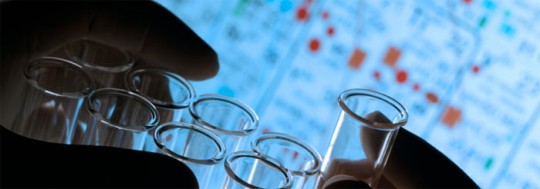
> About The Johns Hopkins University. Facts And Statistics. Research Highlights.
Researchers at The Johns Hopkins University have:
- Learned that the brains of plain-tailed wrens in the cloud forests of Ecuador are wired for cooperation, a result that has implications not only for better
understanding human social behavior, but also for engineers interested in designing teams of robots that can work together. Learn more here. - Are studying the brain of an artist who suffered brain-damaging encephalitis in order to shed light on creativity and the brain. Learn more here.
- Learning how people who are adept in social situations also seem to be more proficient at spatial skills, such as navigating. Learn more here.
- Investigating how a drug already used to treat seizures is improving the memory and brain function of adults with a form of cognitive impairment that often leads to full blown Alzheimer’s disease. Learn more here.
- Found that mice who are forced to work harder for their food — even lower calorie food — like that food more: a result whichcould lead to improved anti-obesity strategies. Learn more here.
- Developing a took that is a cross between a powerful electron microscope and the Hubble Space Telescope, which allows scientists from disciplines ranging from medicine and genetics to astrophysics, environmental science, oceanography and bioinformatics to examine and analyze enormous amounts of data from both “little picture” and “big picture” perspectives. Learn more here.
- Unlocking the mystery of how our body “clocks” work Learn more here.
- Studying how the brain processes the multitude of sensations that come in through our fingers and hands, which will assist in the development of a prosthetic limb that allows the wearer to “feel” sensation. Learn more here
- Investigating what kind of programs are most successful in encouraging people coming out of inpatient rehabilitation programs for substance abuse to continue in their recoveries. Learn more here.
- Are unraveling how number sense — a person’s ability to quickly assess how many objects or people are around them — changes and develops throughout the human life cycle. Learn more here.
- Immigrant blacks more likely to attend elite colleges Learn more here.
- Johns Hopkins survey reveals hidden dimension of health care crisis Learn more here.
- Studying welfare’s treatment of single vs. married mothers Learn more here.
- Recession taking toll on nonprofit workers and programs Learn more here.
- How is Baltimore’s housing holding up in the Great Recession? Learn more here.
- Taxes exact the highest toll from the poorest Americans Learn more here.
- Created dust-particle-size devices to grab and remove living cells from hard-to-reach places without the need for electrical wires, tubes or batteries. In lab tests, they performed a biopsy-like procedure on animal tissue. Learn more here
- Launched a multi-year effort to coax human stem cells to turn into networks of new blood vessels that could someday replace damaged tissue in people with heart disease, diabetes and other illnesses. Learn more here.
- Invented a “lab-on-a-chip” method to help figure out how cancer cells break free from neighboring tissue, an “escape” that can spread the disease to other parts of the body. Learn more here.
- Concluded that in regions that have been devastated by hurricanes and other natural disasters, public officials should pursue a new direction in infrastructure projects, one that focuses on more durable designs and a greater sensitivity to the surrounding environment. Learn more here.
- Discovered that, under the right conditions, newly developed nanocrystalline materials exhibit surprising activity in the tiny spaces between the geometric clusters of atoms called nanocrystals, from which they are made. Learn more here.
- Developed a noninvasive infrared scanning system to help doctors determine whether pigmented skin growths are benign moles or melanoma, a lethal form of cancer. Learn more here.
- Devised a new formula to obtain the best spacing for a large array of wind farm turbines. Learn more here.
- Developed a low-cost health kit to screen pregnant women in developing countries for life-threatening conditions. Learn more here.
- Invented a system to significantly boost the number of stem cells collected from a newborn’s umbilical cord and placenta, so that many more patients with leukemia, lymphoma and other blood disorders can be treated with these valuable cells. Learn more here.
- Found that sifting through millions of Twitter posts could yield important information about public health trends. Learn morehere.
- Devised a protein “switch” that instructs cancer cells to produce their own anti-cancer medication. Learn more here
- Led a study that determined that efforts to reduce the flow of fertilizers, animal waste and other pollutants into the Chesapeake Bay appear to be giving a boost to the bay’s health. Learn more here.
- Developed a jelly-like material and wound treatment method that, in early experiments on skin damaged by severe burns, appeared to regenerate healthy, scar-free tissue. Learn More here **********************
- Determined that a modified version of the popular Atkins diet reliably cuts seizures in adults with epilepsy (2008). Learn more here.
- Use the first functional MRI images of artists’ brains performing jazz improvisation to study the neurological underpinnings of creativity and spontaneity. (2008). Learn more here.
- Developed a prototype for the first fully integrated prosthetic arm. It can be controlled naturally, provide sensory feedback and allows for eight degrees of freedom- a level of control far beyond the previous state of the art for prosthetic limbs (2007). Learn more here.
- Demonstrated that genetically engineered malaria-resistant mosquitoes could outcompete their natural counterparts in the laboratory when fed malaria-infected blood (2007). Learn more here.
- Engineered new, completed, fully functioning motor-neuron circuits in paralyzed adult animals. The neurons stretch from the spinal cord to specifically targeted muscles and restored almost full function to the previously useless limbs (2006). Learn more here.
- Discovered during an archaeological expedition in Luxor, Egypt, a life-sized statue, dating back nearly 3,400 years, of Queen Tiy, one of the queens of the powerful king Amenhotep III (2006). Learn more here.
- Determined that adult male circumcision significantly reduces a man’s risk of acquiring HIV. Plans are in motion to provide safe circumcision and post-op care in southern Africa (2006). Learn more here.
- Demonstrated that graduated driver licensing programs reduced the incidence of fatal crashes of 16-year-old drivers by an average of 11 percent. This confirmed, among other things, the earlier Johns Hopkins study that showed that as the number of passengers increases in a car driven by a teenage driver, so does the likelihood of fatal injury to the driver (2006). Learn more here and here.
- Devised self-assembling cubes, no larger than dust specks, to deliver medicine and cell therapy (2005). Learn more here.
- Determined that SSRI antidepressants rewire areas of the brain that are important to the autonomic nervous system as well as for thinking and feeling. Where the drugs had long been thought to exert their clinical effects by increasing synaptic concentrations of serotonin and norepinephrine, the finding offers a better explanation as to why antidepressants are effective and why they take time to work (2005). Learn more here.
- Showed in animals that adult bone marrow stem cells can be used to repair post-heart attack damage to cardiac muscle and tissue (2005). here.
- Mapped the location of invisible “dark matter” in unprecedented detail, lending support to the theory that galaxies form where dark matter is most dense (2005). Learn more here.
- Determined that massive, mature, fully formed galaxies existed more than 8 billion years ago, far earlier than expected, necessitating a re-examination of the dominant theory of galactic evolution (2004). Learn more here.
- Sent a spacecraft to Mercury to orbit the planet and see, for the first time the majority of Mercury’s surface (2004). Learn more here.
- Discovered that hurricanes, by churning up nutrient-laden water deep below the surface, can transform “desert” areas of oceans into areas teeming with life (2004). Learn more here.
- Created a new class of artificial proteins that can assemble themselves into a gel and encourage the growth of selected cell types (2004). Learn more here.
- Discovered an important link between two main inherited forms of Parkinson’s disease. Also discovered that nitric oxide, a chemical messenger involved in body functions from erections to nerves’ communications, also shuts down a protein involved in Parkinson’s (2004). Learn more here and here.
- Discovered the channels that regulate and facilitate water molecule transport through cell membranes, a process essential to all living organisms (2004). Learn more here.
- Linked disparities in the rates of referral and subsequent enrollment in outpatient cardiac rehabilitation to income and race (2004). Learn more here.
- Identified a complex series of proteins that enable HIV to bypass the natural defenses of human cells and replicate, a discovery that increased understanding of how HIV overcomes host defenses (2003). Learn more here.
- Drew national attention to the potential for security breaches in electronic touch-screen voting systems (2003). Learn more here.
- Engineered a way to determine if digital video has been tampered with and is, therefore, unusable as evidence in court (2003). Learn more here.
- Played a leading role in the creation of a landmark map detailing the way proteins interact within fruit fly cells. The map provides a model for future studies in humans that should lead to a better understanding of genetic disorders and infectious diseases (2003). Learn more here.
- Discovered a “twinning” phenomenon in a nanocrystalline form of aluminum that was plastically deformed during lab experiments. The finding will help scientists better predict the mechanical behavior and reliability of new types of specially fabricated metals (2003). Learn more here.
- Joined two proteins in a way that creates a molecular “switch,” using a lab technique called domain insertion. The result is a microscopic protein partnership in which one member controls the activity of the other (2003). Learn more here.
- Developed a way to protect buildings from deadly biological pathogen attacks using a unique filtration system (2003).Learn more here.
- Discovered that the injection of human stem cells into fluid around the spinal cord of paralyzed rats improved the animals’ ability to control their hind limbs. This research was an important early step in analyzing the potential of various types of stem cells in disorders of motor neurons (2003). Learn more here.
- With an instrument on the Cassini spacecraft, discovered a massive gas cloud surrounding Jupiter (2003). Learn morehere.
- Developed a novel form of gene therapy that delayed symptoms and almost doubled life expectancy in mice with the equivalent of Lou Gehrig’s disease (2003). Learn more here.
- Demonstrated that a multidisciplinary team intervention program works better to reduce blood pressure in urban African-American men (2003). Learn more here.
- Identified depression as a likely barrier to high blood pressure control in African-American men (2003). Learn more here.
- Identified risk factors for the murder of women in abusive relationships (2003). Learn more here.
- Reported that treating young children with zinc in addition to standard antibiotics greatly reduces the duration of severe pneumonia, a leading cause of death among children, particularly in the developing world (2002). Learn more here.
- Produced a form of pure copper metal six times stronger than normal and yet no more likely to fracture when stretched, an achievement important to the development of microelectromechanical systems (2002). Learn more here.
- After first discovering, that knocking out particular muscle gene results in “mighty mice,” reported that the procedure alsosoftens the effects of a genetic mutation that causes muscular dystrophy (2002). Learn more here, here and here.
- After discovering that stress and surgery may increase the growth of cancerous tumors in rats (1999), found that giving the rats the anti-inflammatory drug indomethacin after cancer surgery reduced tumor growth (2002). Learn more here andhere.
- Landed the first spacecraft on an asteroid (2001). Learn more here.
- Invented a globe-shaped motor that is capable of rotating in any direction. The device, which uses electromagnets controlled by a computer, could give robotic arms greater flexibility and precision and might even allow the lowly computer mouse to guide the hand of the computer user, instead of the reverse (2001). Learn more here.
- Demonstrated that a specific enzyme is essential to production of a hallmark of Alzheimer’s disease, the amyloid plaquesthat collect and surround brain cells (2000). Learn more here.
- Revealed that Korean Americans have hypertension at rates much higher than other Americans or their counterparts in Korea (2000). Learn more here.
- Pinpointed areas in the brain that may generate mice mothers’ violent response to protect their babies, an accomplishment that could help scientists better understand aggression’s origins in humans (2000). Learn more here.
- Restored movement to recently paralyzed rodents by injecting stem cells into their spinal fluid, raising hope for improved treatment of paralyzing motor neuron diseases such as amyotrophic lateral sclerosis (2000). Learn more here.
- Isolated and identified human stem cells and proved them capable of forming the fundamental tissues that give rise to distinct human cells such as muscle, bone and nerve (2000). Learn more here.
- Discovered a family of genes that contributes to the process of malignancy, shedding new light on the abnormalities that give rise to lymphoma, leukemia and prostate, ovarian, lung and breast cancer (2000). Learn more here.
- Developed a modified form of vitamin D that helps delay the onset and reduce the number of skin cancers in lab mice without causing vitamin D-induced loss of bone calcium (2000).
- Co-developed a DNA vaccine that protects against measles, the most conclusive work to date demonstrating that DNA vaccines may be useful in the fight against human disease
- Dramatically improved the accuracy of blood tests for colon cancer predisposition, to the point where genetic mutations associated with certain hereditary diseases can be detected nearly 100 percent of the time (2000).
- Linked the ability to “pay attention” to one particular occurrence among a flood of incoming sensory information to the sudden firing of a brain cell “chorus” amidst the cacophony of normal brain cell activity (2000). Learn more here.
- Demonstrated that, as the number of passengers increases in a car driven by a teenage driver, so does the likelihood of fatal injury to the driver (2000). Learn more here.
- Invented a micropump powered by the repeated growth and collapse of a single bubble. Because the bubble is generated by heat, it is easy to control, and because the bubble-powered pump has no moving mechanical parts, it is unlikely to wear out too quickly (1999). Learn more here.
- Demonstrated that virtually all cases of cervical cancers were connected to transmission of HPV. The initial discovery led to the development of the HPV vaccine (1999).
- Guided the NEAR spacecraft to the first-ever orbit around an asteroid (433 Eros), allowing close-up scientific study of a body still composed of primitive material from the time of the formation of the solar system (2000). Learn more here.
- Identified a single gene variation that may explain some of the key individual differences in pain sensitivity (1999). Learn more here.
- Invented a micro-pump powered by the repeated growth and collapse of a single bubble (1999). Learn more here.
- Showed that vitamin A supplements can reduce malaria and maternal death, and that zinc supplements reduce infant mortality, pneumonia and diarrhea in developing countries (1999). Learn more here.
- Identified a drug that stops the growth of abnormal blood vessels in the eye, an advance that could have sight-saving implications for millions of people with complications of diabetes (1999). Learn more here.
- Participated on a team that discovered that the first alphabet — from which modern alphabets all evolved — is centuries older than previously believed (from the 1900s B.C.) and was probably invented in Egypt (1999). Learn more here.
- Showed that children as young as 6 months begin to comprehend words, linking sound patterns with specific meanings (1999).
- Isolated and cultivated human embryonic stem cells, the undifferentiated cell from which an entire human being eventually develops (1998). Learn more here.
- Provided the first reliable evidence of genetic susceptibility to schizophrenia (1998). Learn more here.
- Identified broccoli sprouts as an especially rich source of the cancer-fighting compound sulforaphane (1997). Learn morehere.
- Discovered a protein ‘chaperone’ to superoxide dismutase enzyme, responsible for transporting copper within a cell. The discovery raised important questions about copper’s role in ALS (Lou Gehrig’s Disease) (1997).
- Identified the first genetic mutation known to cause familial colorectal cancer, and invented a simple blood test to allow carriers to detect the mutation and take measures to guard against the disease (1997). Learn more here.
- Led a team that was the first ever to detect fluorine in interstellar space (1997). Learn more here.
- Hopkins researchers have flown the space probe NEAR to within 750 miles of 253 Mathilde, the closest-ever human encounter with an asteroid (1997). Learn more here.
- Invented the first all-plastic battery (1996). Learn more here.
- Mapped the first specific prostate cancer gene to chromosome 1 (1996). Learn more here.
- Discovered a genetic basis for violent and excessive sexual behavior in mice (1995). Learn more here.
- Helped develop the first effective treatment for sickle cell anemia (1995).
- Identified the gene that causes most forms of polycystic kidney disease, the most common inherited kidney disease (1995).
- Identified a form of low blood pressure as a probable cause of chronic fatigue disorder (1995).
- Presented the first conclusive physical evidence for the existence of supermassive black holes (1994). Learn more here.
- Identified sulforaphane, a chemical in broccoli and other cruciferous vegetables that appears to inhibit the development of cancer (1993).
- Identified a gene responsible for a widespread form of colon cancer (1993).
- Announced findings expected to lead to simple urine test to aid in early detection of cancer (1991).
- Synthesized a new form of Vitamin D, with possible future application as an anti-cancer drug (1990).
- Conducted astronomical observations in the ultraviolet that discredited a widely circulated theory on the source of the missing “dark matter” in the universe (1990). Learn more here.
- Induced apparently normal human brain cells to multiply in the test tube, opening the possibility that such cells could be used in treating neurological diseases (1990).
- Discovered how the brain “hears” — how bioelectrical signals from the inner ear to the brain are encoded — findings with important implications not only for understanding the hearing process but also for how the brain operates (1989). Learn more here.
- Created a new process for spray-painting cars, furniture, and appliances which reduces air pollution from that source by as much as 70 percent (1989). Learn more here.
- Discovered that E. coli, a bacterium found in the human gastrointestinal tract, can repair its own DNA when damaged by ultraviolet light, thus providing a method for the investigation of DNA repair proteins in molecular and cell biology (1987).
- Invented a pill-size ingestible electronic capsule to telemeter deep-body temperatures (1987). Learn more here.
- Developed parallel processor technology, permitting the upgrading of existing computer installations by providing supercomputing capabilities at greatly reduced costs (1987).
- Established techniques whereby the history of motion within fault zones can be traced and used to decide whether particular fault zones should be considered dangerous or inactive (1980s).
- Studied the physics and chemistry of magma, leading to an understanding of the dynamics of molten rock within the earth and beneath volcanoes and advancing knowledge of how to alleviate volcanic hazards and extract geothermal energy from such reservoirs (1980s).
- Developed the Multisensory Authoring Computer System which enables teachers to generate individualized instruction lessons for students with moderate to severe handicaps (1985).
- Discovered that Oltipraz, a compound found in cruciferous vegetables (cabbage, brussels sprouts, cauliflower) offered protection for the body from the effects of radiation therapy for cancer (1983).
- Discovered that pennies worth of vitamin A supplements administered to Indonesian children as part of a blindness prevention program were accompanied by a dramatic drop in infant death rates, leading to similar vitamin treatments for thousands of children in developing countries (1983-1986).
- Developed the first magnetometer sensor to remotely locate regions of gas pipeline corrosion (1982).
- Developed a heat-shrinkable polymer used as a sleeve, which took the place of sutures in vascular surgery (1981).
- Showed how deposits of metallic ores are formed within the earth and under what conditions they can be located, work that was central to understanding the dispersal and collection of oil (1980s).
- Conducted fundamental research on the crystal structure and general properties of asbestos which enabled physicians to understand why such material is harmful to mankind (1980s).
- Identified a protein which controls the assembly and disassembly of the structures responsible for the shape and movement of living cells, a major contribution to understanding the fundamental mechanisms of cell motility, one of the most important problems in cell biology (1980).
- Conducted basic research on the sea surface and problems of air-sea interaction, leading to an understanding of thegeneration of water waves, including highly destructive rogue waves which are a threat to ocean-going vessels (1970s-1980s).
- With an experiment aboard the Voyager 2 spacecraft, discovered a 400-million degree plasma in the magnetosphere of Jupiter, a finding which challenged conventional understanding of some of the basic physics of planets and stars (1979).
- Developed the first successful treatment to desensitize people against bee stings (1975).
- Identified high rates of infant deaths in motor vehicle accidents, leading to the passage of child safety restraint lawsthroughout the United States (1979).
- Discovered that ketoacids as a substitute for dietary protein were useful in forestalling dialysis in kidney failure and in treating protein depletion or intolerance (1976).
- Invented the first microcomputer-controlled implantable medication delivery system (1975).
- Provided the first successful demonstration of the effect of a planned health education program in decreasing morbidity and mortality from a chronic disease (hypertension) (1975).
- Developed the first method for routinely visualizing the choroidal blood vessels of the eye (1973).
- Showed that use of oral contraceptives by women was associated with increased risk of thromboembolism (1969) and of breast cancer (1973).
- Identified the sites where heroin and other opiates act in the brain, a discovery which had important applications for the treatment of drug addicts and for the screening and development of new and potentially non-addictive pain-killing drugs (1972).
- Invented the first implantable, rechargeable pacemaker for cardiac disorders (1972).
- Based on research with the Framingham Heart Study, first directed attention to the importance of social factors in the etiology of heart disease (1970).
- Devised the “Self-Directed Search,” an inexpensive but accurate self- administered test providing occupational guidance for students and adults (1970).
- Developed the first clinically useful Argon photocoagulator, providing ophthalmologists with a technique for repairing damaged retinal vasculature (1969).
- Took the first color photograph of the whole earth from space (1967).
- Discovered restriction enzymes, the so-called “biochemical scissors,” which gave birth to the entire new field of genetic engineering (1960s). The discoverers were awarded the Nobel Prize in 1978 for their achievement.
- Were among the first to warn of possible dangers to women who used oral contraceptives, indicating the need for further study of the effects of the pills (1965).
- Developed the Limulus lysate test, a sensitive and inexpensive detector of the bacterial endotoxins associated with such diseases as meningitis and septicemia (1963).
- Synthesized luciferin, the substance which lights the tail of the firefly, furthering research on ATP, the primary energy source in biological action (1962).
- Described the structure and function of the complement system, a complex set of enzymes which play an important role in human immunological defenses against cancer, bacteria, and viruses (1961).
- Conducted the first major, large-scale research study of conditions of inequality in American schools, which resulted in the landmark report, “Equality of Educational Opportunity” (1960).
- Developed oral rehydration therapy, which replaces food and electrolytes lost from the body during attacks of diarrheal disease (1960s).
- Invented cardiopulmonary resuscitation, the lifesaving first-aid technique, thanks to a chance observation during work on the defibrillating machine (also invented at Hopkins) that weight placed on the chest increases blood pressure. (1958).
- Conceived and developed Transit satellites, the first navigation system operating on the principle of the Doppler shift and making possible navigational “fixes” of unprecedented accuracy (1957-1960).
- Demonstrated that the spread of tuberculosis in hospitals could be inhibited by the use of ultraviolet light to kill airborne bacteria (1957).
- Showed that retrolental fibroplasia, which causes blindness in premature infants, was related to high concentrations of oxygen used in babies’ incubators (1954).
- First established a link between chromates and lung cancer among factory workers, a pioneering step in the field of occupational health (1950s).
- Developed the Lumicon, one of the earliest light intensification systems, which increased brightness as much as 50,000 times and proved of great value in improved fluoroscopy and x-ray therapy (1950).
- Developed Hank’s Solution, a defined salt solution to meet the needs of cells growing in tissue culture, dramatically extending the possibilities of in vitro cultivation of many types of cells (1949).
- Confirmed the authenticity of the Dead Sea Scrolls, speeding acceptance as genuine of these earliest biblical manuscripts (1948).
- Immunized chimpanzees with inactivated vaccines, essential to the development of the first widely used polio vaccine and a major step toward the prevention of poliomyelitis in human beings (1947-1952).
- Discovered dramamine’s effectiveness in alleviating motion sickness (1948).
- Took the first images of the Earth’s curvature, from a V-2 rocket (1946).
- Developed the first supersonic ramjet engine (1944).
- Developed the “blue baby” operation to correct congenital heart defects, ushering in a new era in open heart surgery (1944).
- Found the causes and developed treatment and preventive measures for scrub typhus which afflicted American and Australian troops in the South Pacific during World War II (1943).
- Produced the human serum needed to provide 1 million doses of yellow fever vaccine for U.S. troops during World War II (1942).
- Put the chronology of Middle Eastern pottery on a firm footing for the first time, making possible the accurate dating of excavations in the Holy Land (1938).
- Invented Hopcalite, a catalyst which converts carbon monoxide into carbon dioxide and reduces the danger from automobile exhaust fumes (1930).
- Identified and described the most dangerous malaria carrier in Latin America, the Anopheles mosquito (1926).
- Developed the system of water purification by chlorination which was eventually adopted by every major municipal and industrial water supply system in the country and many other parts of the world (1920s).
- Developed a method of growing rickettsia in fertile egg membranes, thereby permitting the development of vaccines(1920s).
- Discovered and developed the absorptive agent silica gel, which became a key ingredient in many industrial processes (1920s).
- Discovered vitamin D and its role in preventing rickets, vastly extending scientific knowledge of nutrition and laying the groundwork for food enrichment and nutritional planning (1922).
- Conducted spectroscopic investigations which contributed to the formulation of the quantum theory (1920s).
- Developed mercurochrome, a widely used antiseptic (1919).
- Discovered heparin, a drug used to prevent blood coagulation, now widely used in the treatment of thrombosis and in cardiac surgery (1916-1918).
- Developed the first successful renal dialysis in an animal model (1913).
- Isolated epinephrine (adrenalin), sales of which now exceed $6 million a year (1897).
- Published the first modern edition of the “Gilgamesh Epic,” making available to the world the most significant extra-biblical work of ancient Near Eastern literature (1891).
- Introduced the rubber glove for use during surgery (1889).
- Invented the ruling engine for making diffraction gratings, making possible spectacular advances in astronomy and laying the foundation for the modern sciences of atomic and molecular spectroscopy (1880).
- Discovered the sweetening agent saccharine (1879).
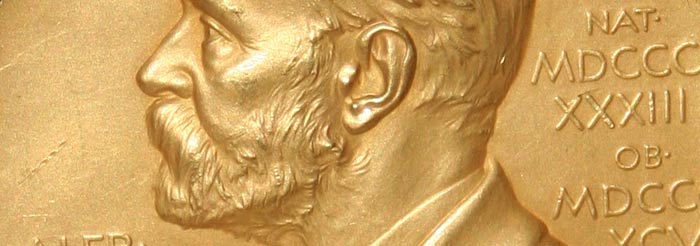
> About The Johns Hopkins University. Nobel Prize Winners.
The following winners of Nobel Prizes have had an association with The Johns Hopkins University, either as graduates of Johns Hopkins or as faculty of the university before, at the time of or subsequent to their receipt of the prize.
…
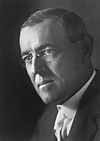 |
1. Woodrow Wilson Ph.D. 1886 (History)  Nobel Prize in Peace, 1919 Nobel Prize in Peace, 1919 |
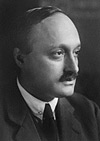 |
2. James Franck Professor of Physics, 1935-38  Nobel Prize in Physics, 1925 Nobel Prize in Physics, 1925 |
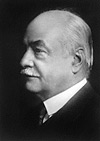 |
3. Nicholas Murray Butler Lecturer, 1890-91  Nobel Prize in Peace, 1931 Nobel Prize in Peace, 1931 |
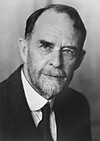 |
4. Thomas Hunt Morgan Ph.D. 1890 (Zoology); LL.D. 1915  Nobel Prize in Medicine, 1933 Nobel Prize in Medicine, 1933 |
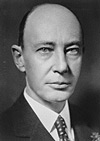 |
5. George Richards Minot Assistant in Medicine, 1914-15  Nobel Prize in Medicine, 1934 Nobel Prize in Medicine, 1934 |
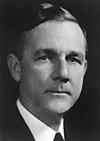 |
6. George Hoyt Whipple M.D. 1905; Associate Professor in Pathology, 1910-14  Nobel Prize in Medicine, 1934 Nobel Prize in Medicine, 1934 |
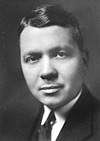 |
7. Harold Clayton Urey Associate in Chemistry, 1924-28  Nobel Prize in Chemistry, 1934 Nobel Prize in Chemistry, 1934 |
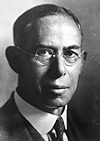 |
8. Joseph Erlanger M.D. 1899; Assistant in Physiology, 1900-01; Instructor, 1901-03; Associate, 1903-04; Associate Professor, 1904-06; LL.D. 1947  Nobel Prize in Medicine, 1944 Nobel Prize in Medicine, 1944 |
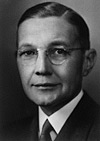 |
9. Herbert Spencer Gasser M.D. 1915  Nobel Prize in Physiology, 1944 Nobel Prize in Physiology, 1944 |
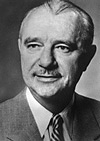 |
10. Vincent du Vigneaud National Research Fellow, Pharmacology 1927-28  Nobel Prize in Chemistry, 1955 Nobel Prize in Chemistry, 1955 |
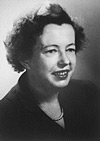 |
11. Maria Goeppert-Mayer Assistant in Physics, 1930-32; Associate, 1932-36  Nobel Prize in Physics, 1963 Nobel Prize in Physics, 1963 |
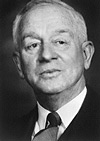 |
12. Francis Peyton Rous A.B. 1900; M.D. 1905  Nobel Prize in Medicine, 1966 Nobel Prize in Medicine, 1966 |
 |
13. Haldan Keffer Hartline M.D. 1927; Professor of Biophysics, 1949-54  Nobel Prize in Medicine, 1967 Nobel Prize in Medicine, 1967 |
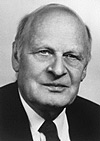 |
14. Lars Onsager Associate in Chemistry, 1927-28  Nobel Prize in Chemistry, 1968 Nobel Prize in Chemistry, 1968 |
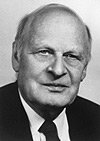 |
15. Simon Kuznets Professor of Political Economy, 1954-60  Nobel Prize in Economics, 1971 Nobel Prize in Economics, 1971 |
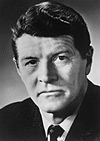 |
16. Christian B. Anfinsen Professor of Biology, 1982-1995  Nobel Prize in Chemistry, 1972 Nobel Prize in Chemistry, 1972 |
 |
17. Hamilton O. Smith M.D. 1956; Assistant Professor of Microbiology, 1967-69; Associate Professor, 1969-1973; Professor, 1973-1998; Professor Emeritus 1998-present  Nobel Prize in Medicine, 1978 Nobel Prize in Medicine, 1978 |
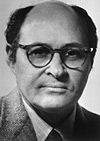 |
18. Daniel Nathans Assistant Professor, 1962-65; Associate Professor, 1965-67; Professor of Molecular Biology and Genetics, 1967-1999; Interim President, 1995-96  Nobel Prize in Medicine, 1978 Nobel Prize in Medicine, 1978 |
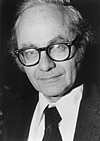 |
19. David H. Hubel Assistant Resident, Neurology, 1954-55; Fellow, Neuroscience, 1958-59  Nobel Prize in Medicine, 1981 Nobel Prize in Medicine, 1981 |
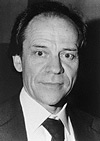 |
20. Torsten Wiesel Fellow, Ophthalmology, 1955-58; Assistant Professor, 1958-59  Nobel Prize in Medicine, 1981 Nobel Prize in Medicine, 1981 |
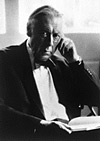 |
21. Sir Richard Stone Visiting Professor, Political Economy 1953-54  Nobel Prize in Economics, 1984 Nobel Prize in Economics, 1984 |
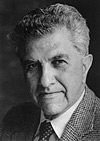 |
22. Merton H. Miller Ph.D. 1952 (and honorary doctorate 1993)  Nobel Prize in Economics, 1990 Nobel Prize in Economics, 1990 |
 |
23. Robert W. Fogel Ph.D. 1963  Nobel Prize in Economics, 1993 Nobel Prize in Economics, 1993 |
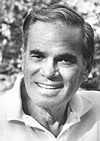 |
24. Martin Rodbell B.A. Biology 1949  Nobel Prize in Medicine, 1994 Nobel Prize in Medicine, 1994 |
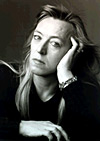 |
25. Jody Williams M.A. Latin American Studies (SAIS) 1984  Nobel Prize in Peace, 1997 Nobel Prize in Peace, 1997 |
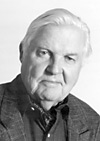 |
26. Robert H. Mundell Visiting faculty at SAIS Bologna Center, 2000-2001; AGIP Chair in International Economics at the center, 1997-98; also was on the center’s faculty, 1959-61  Nobel Prize in Economics, 1999 Nobel Prize in Economics, 1999 |
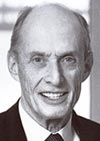 |
27. Paul Greengard Ph.D. Biophysics 1953  Nobel Prize in Medicine, 2000 Nobel Prize in Medicine, 2000 |
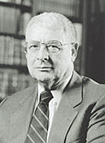 |
28. Riccardo Giacconi Professor of Physics and Astronomy, 1982-1997; Research Professor of Physics and Astronomy 1998-present  Nobel Prize in Physics, 2002 Nobel Prize in Physics, 2002 |
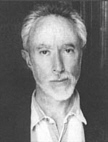 |
29. J.M. Coetzee Hinkley Visiting Professor in the Writing Seminars, Jan. 1, 1989 to June 30, 1989  Nobel Prize in Literature, 2003 Nobel Prize in Literature, 2003 |
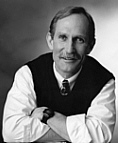 |
30. Peter Agre M.D. 1974; Postdoctoral fellow, Department of Pharmacology, 1974-75; Research Associate/Instructor, Cell Biology and Anatomy, and Medicine, 1981-83; Assistant Professor, 1984-88; Associate Professor, 1988-93; Professor of Biological Chemistry and Medicine, 1993-2005, Malaria Institute, 2008-.  Nobel Prize in Chemistry, 2003 Nobel Prize in Chemistry, 2003 |
 |
31. Richard Axel M.D. 1971  Nobel Prize in Medicine, 2004 Nobel Prize in Medicine, 2004 |
 |
32. Andrew Fire Adjunct professor of biology, 1989-  Nobel Prize in Medicine, 2006 Nobel Prize in Medicine, 2006 |
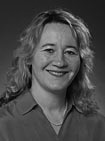 |
33. Carol Greider Daniel Nathans Professor and Director of Molecular Biology and Genetics Institute of Basic Biomedical Sciences, Johns Hopkins School of Medicine 1997-  Nobel Prize in Physiology or Medicine, 2009 Nobel Prize in Physiology or Medicine, 2009 |
 |
34. Robert Edwards Visiting researcher, School of Medicine 1965  Nobel Prize in Physiology or Medicine, 2010 Nobel Prize in Physiology or Medicine, 2010 |
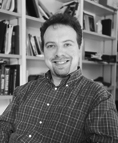 |
35. Adam Riess Krieger-Eisenhower Professor in Physics and Astronomy, Zanvyl Krieger School of Arts & Sciences  Nobel Prize in Physics, 2011 Nobel Prize in Physics, 2011 |
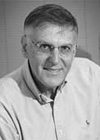 |
36. Daniel Shectman Visiting researcher, Whiting School of Engineering 1981-83  Nobel Prize in Chemistry, 2011 Nobel Prize in Chemistry, 2011 |
| NOTE: International Physicians for The Prevention of Nuclear War Inc. of Boston, Mass., was the winner of the Nobel Peace Prize in 1985. Two Johns Hopkins graduates — Bernard Lown, M.D. 1945, and James E. Muller M.D. 1969 — were among the six physicians (three Americans, three Soviets) who founded that organization in 1980. Dr. Lown delivered one of the two Nobel acceptance speeches on behalf of the organization. | |
….

> About The Johns Hopkins University. Notable Hopkins Graduates.
….
 |
Peter Agre M.D., SOM 1974  Shared Nobel Prize in Chemistry in 2003 Shared Nobel Prize in Chemistry in 2003 |
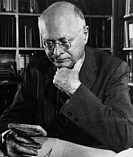 |
William Foxwell Albright PhD, A&S 1916  Authenticator of the Dead Sea Scrolls; renowned scholar in Semitics and Near Eastern Studies Authenticator of the Dead Sea Scrolls; renowned scholar in Semitics and Near Eastern Studies |
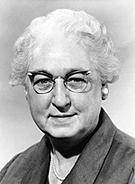 |
Virginia Apgar MPH, SPH ’59  Developed Apgar score used to assess health of newborns Developed Apgar score used to assess health of newborns |
 |
Dominick Argento PT.C. PEAB ’50 and ’51, B.M. PEAB ’51, M.M. PEAB ’54  Pulitzer Prize-winning composer Pulitzer Prize-winning composer |
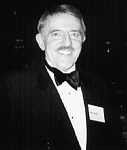 |
John Astin BA, A&S 1952  Actor (movie, television, and stage); best-known for his role as Gomez in The Addams Family Actor (movie, television, and stage); best-known for his role as Gomez in The Addams Family |
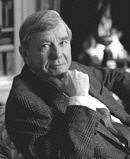 |
Russell Baker BA, A&S 1947  Pulitzer Prize-winning columnist for theNew York Times; host of PBS’s Masterpiece Theatre Pulitzer Prize-winning columnist for theNew York Times; host of PBS’s Masterpiece Theatre |
 |
John Barth BA, A&S 1951 MA, A&S 1952  Novelist; professor Novelist; professor |
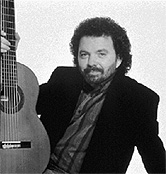 |
8. Joseph Erlanger M.D. 1899; Assistant in Physiology, 1900-01; Instructor, 1901-03; Associate, 1903-04; Associate Professor, 1904-06; LL.D. 1947  Nobel Prize in Medicine, 1944 Nobel Prize in Medicine, 1944 |
 |
Jeffrey Blitz B.A., A&S ’90 , M.A. ’91  Writer/director of “Spellbound” and “Rocket Science” Writer/director of “Spellbound” and “Rocket Science” |
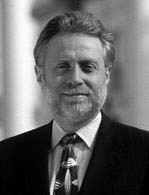 |
Wolf Blitzer MA, SAIS 1972  Journalist; CNN anchor Journalist; CNN anchor |
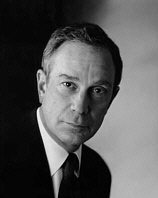 |
Michael Bloomberg BS, ENG 1964  108th mayor of the city of New York; founder of Bloomberg L.P., Bloomberg News, Bloomberg Radio 108th mayor of the city of New York; founder of Bloomberg L.P., Bloomberg News, Bloomberg Radio |
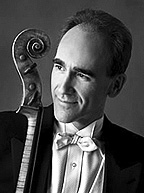 |
Carter Brey B.M., PEAB ’76  Principal cellist, New York Philharmonic; soloist Principal cellist, New York Philharmonic; soloist |
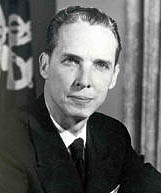 |
Leroy Burney MPH, SPH ’32  U.S. Surgeon General 1956-61; first federal official to publicly identify cigarette smoke as a cause of lung cancer U.S. Surgeon General 1956-61; first federal official to publicly identify cigarette smoke as a cause of lung cancer |
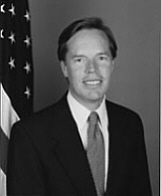 |
R. Nicholas Burns M.A., SAIS 1980  Under secretary of state for political affairs; previously ambassador to NATO, ambassador to Greece and, during the Clinton administration, State Department press spokesman Under secretary of state for political affairs; previously ambassador to NATO, ambassador to Greece and, during the Clinton administration, State Department press spokesman |
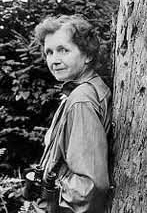 |
Rachel Carson MA, A&S 1932  Biologist; ecologist; author Biologist; ecologist; author |
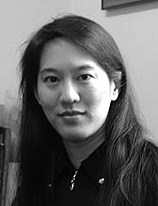 |
Iris Chang MA, A&S ’71M.A., SAIS 1980  Author Author |
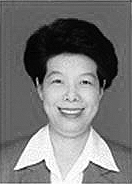 |
Po Ya Chang MPH, SPH ’74  Taiwan public official and minister of health Taiwan public official and minister of health |
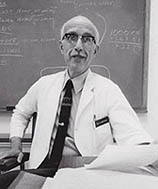 |
George Comstock Dr.P.H., SPH ’65  Pioneer of tuberculosis control and treatment Pioneer of tuberculosis control and treatment |
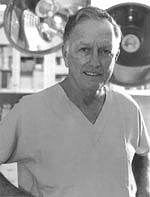 |
Denton A. Cooley MD, SOM 1944  World-renowned cardiac surgeon; performed first successful human heart transplant in the U.S. and the first implantation of a total artificial heart in a human World-renowned cardiac surgeon; performed first successful human heart transplant in the U.S. and the first implantation of a total artificial heart in a human |
 |
Wes Craven MA, A&S 1964  Horror film director; best-known forNightmare on Elm Streetand the Scream trilogy Horror film director; best-known forNightmare on Elm Streetand the Scream trilogy |
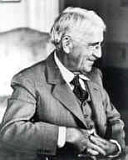 |
John Dewey PhD, A&S 1884  American philosopher, social critic and educator American philosopher, social critic and educator |
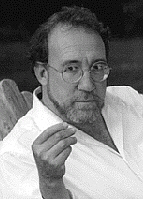 |
Richard Ben Cramer BA, A&S 1971  Pulitzer Prize-winning journalist and author Pulitzer Prize-winning journalist and author |
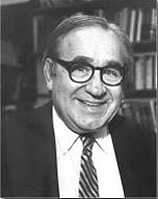 |
Robert W. Fogel PhD, A&S ’63  Nobel Prize in Economics 1993 Nobel Prize in Economics 1993 |
 |
Caleb Deschanel B.A., A&S ’66  Five-time Oscar-nominated cinematographer Five-time Oscar-nominated cinematographer |
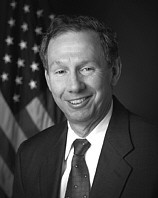 |
Michael Griffin B.S. physics, A&S 1971; M.S. applied physics, ENG 1983PhD, A&S ’63  NASA administrator beginning in April 2005 NASA administrator beginning in April 2005 |
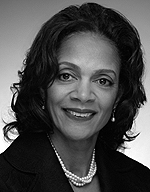 |
Sheila Dixon Former Baltimore mayor Former Baltimore mayor |
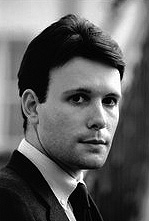 |
Michael Hersch B.M., PEAB ’95, M.M., PEAB ’97  Composer, first prize in American Composers Awards (1996) Composer, first prize in American Composers Awards (1996) |
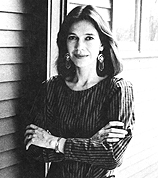 |
Louise Erdrich MA, A&S ’70  Author Author |
 |
Terry Keenan B.A., A&S ’83  Business correspondent for Fox News Channel Business correspondent for Fox News Channel |
 |
Nancy Grasmick Ed.D., EDUC ’80  First woman state superintendent of schools in Maryland First woman state superintendent of schools in Maryland |
 |
Murray Kempton> BA, A&S 1939  Pulitzer Prize winning New York journalist Pulitzer Prize winning New York journalist |
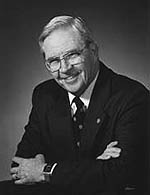 |
D.A. Henderson MPH, , SPH ’60  Led WHO effort that eradicated smallpox Led WHO effort that eradicated smallpox |
 |
Alexander Langmuir MPH, , SPH ’40  Founded U.S. Epidemic Intelligence Service Founded U.S. Epidemic Intelligence Service |
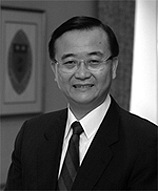 |
Sheng-Mou Hou MPH, , SPH ’98  Taiwan minister of health Taiwan minister of health |
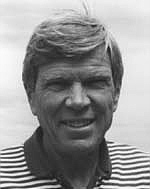 |
James McPherson PhD, A&S 1963  Pulitzer Prize-winning historian and author Pulitzer Prize-winning historian and author |
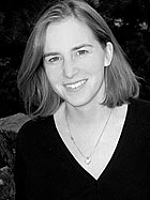 |
Michele Kelemen M.A. SAIS 1993  Diplomacy correspondent for National Public Radio Diplomacy correspondent for National Public Radio |
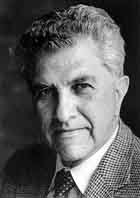 |
Merton Miller PhD, A&S 1952  U.S. economist; winner of the Nobel Prize in Economics (1990) U.S. economist; winner of the Nobel Prize in Economics (1990) |
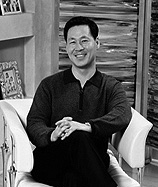 |
Jeong H. Kim BS, ENG ’82; MS, ENG ’89  President of Alcatel-Lucent Bell Labs President of Alcatel-Lucent Bell Labs |
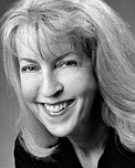 |
Caryle Murphy MA, SAIS 1987  Pulitzer Prize-winning journalist for international reporting for The Washington Post Pulitzer Prize-winning journalist for international reporting for The Washington Post |
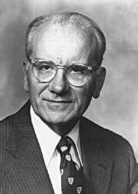 |
Victor A. McKusick MD, SOM 1946  Medical geneticist; author of Mendelian Inheritance in Man, the definitive source of information on human genes and genetic disorders Medical geneticist; author of Mendelian Inheritance in Man, the definitive source of information on human genes and genetic disorders |
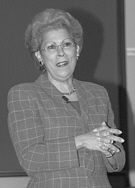 |
Antonia Novello MA, SPH 1982  Physician and former surgeon general under President George H. W. Bush (1990-1993) Physician and former surgeon general under President George H. W. Bush (1990-1993) |
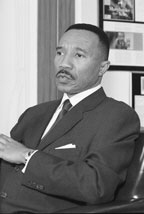 |
Kweisi Mfume MLA, SCS (now A&S) 1984MD, SOM 1946  Former President, National Association for the Advancement of Colored People (NAACP) Former President, National Association for the Advancement of Colored People (NAACP) |
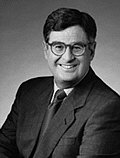 |
Samuel J. Palmisano BA, A&S 1973  Chairman of the board and chief executive officer, IBM Corp. Chairman of the board and chief executive officer, IBM Corp. |
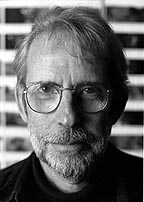 |
Walter Murch B.A., A&S ’65  Two-time Oscar-winning film editor and sound mixer Two-time Oscar-winning film editor and sound mixer |
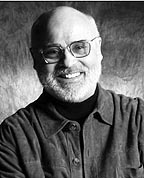 |
Seth Riggs T.C., PEAB ’54  Vocal coach to pop and movie stars and opera singers Vocal coach to pop and movie stars and opera singers |
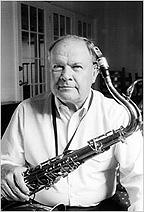 |
Tommy Newsom B.M., PEAB ’52  Composer, arranger, performer, winner of two Emmys and assistant conductor of the “Tonight Show” band Composer, arranger, performer, winner of two Emmys and assistant conductor of the “Tonight Show” band |
 |
Kathleen Schalch MA, SAIS ’88  NPR business reporter NPR business reporter |
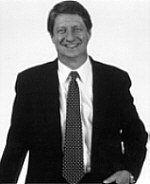 |
P.J. O’Rourke M.A. Writing Seminars, A&S 1970  Journalist, political satirist and author Journalist, political satirist and author |
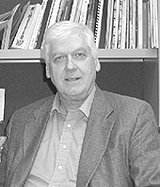 |
Hamilton O. Smith MD ’56  Nobel Prize in Medicine 1978 Nobel Prize in Medicine 1978 |
 |
Awadagin Pratt Performer’s Certificate, PEAB 1989 Graduate Performance Diploma, PEAB 1992  Pianist; winner of the Naumburg International Piano Competition, 1992 Pianist; winner of the Naumburg International Piano Competition, 1992 |
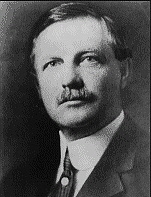 |
Frederick Jackson Turner Ph.D. history, A&S 1890  Influential historian, best known for the Frontier Thesis Influential historian, best known for the Frontier Thesis |
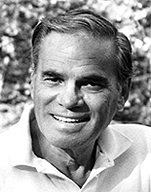 |
Martin Rodbell BA, , A&S ’49  Nobel Prize in Medicine 1994 Nobel Prize in Medicine 1994 |
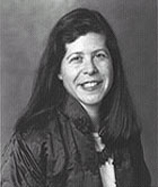 |
Joanne Silberner BA, A&S ’77  NPR health policy correspondent NPR health policy correspondent |
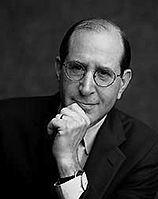 |
Alfred Sommer MHS, SPH ’73  Discovered link between vitamin A deficiency and child mortality, establishing vitamin A as a cost-effective means of reducing child deaths in the developing world Discovered link between vitamin A deficiency and child mortality, establishing vitamin A as a cost-effective means of reducing child deaths in the developing world |
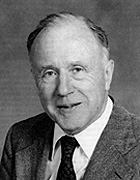 |
John A. Wheeler B.S., WSE ’31 PhD, A&S ’33  Physicist who helped develop nuclear fission, studied general relativity and coined the term “black hole.” Physicist who helped develop nuclear fission, studied general relativity and coined the term “black hole.” |
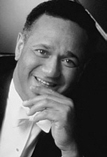 |
Andre Watts Artist Diploma, PEAB 1972  World-renowned concert pianist World-renowned concert pianist |
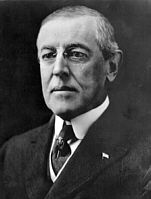 |
Woodrow Wilson PhD, A&S 1886  28th President of the United States (1913-1921); winner of Nobel Prize in Peace (1919) 28th President of the United States (1913-1921); winner of Nobel Prize in Peace (1919) |
 |
Jody Williams MA, SAIS 1984  Founding coordinator of the International Campaign to Ban Landmines (ICBL); winner of Nobel Peace Prize (1997) Founding coordinator of the International Campaign to Ban Landmines (ICBL); winner of Nobel Peace Prize (1997) |
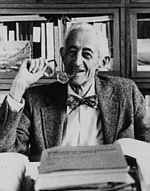 |
Abel Wolman A&S 1913, ENG 1915  World-renowned water treatment expert; invented modern water treatment techniques World-renowned water treatment expert; invented modern water treatment techniques |
| Key to Abbreviations A&S = Krieger School of Arts & Sciences BUS = Carey Business School EDUC = School of Education ENG = Whiting School of Engineering PEAB = Peabody Institute SAIS = Nitze School of Advanced International Studies SCS = School of Continuing Studies SOM = School of Medicine SPH = Bloomberg School of Public Health |
|
….

> About The Johns Hopkins University.


















